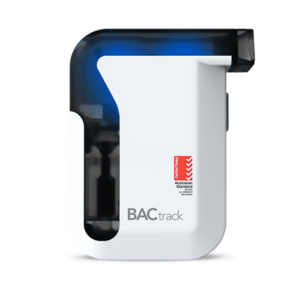Drug And Alcohol Testing Certificate: Topics Covered In The Program
16 April, 2024

A drug and alcohol testing certificate is a specialised credential that signifies the unit of competency of a person in administering testing activities. Employers and medical centres often pursue it. Accordingly, the successful completion of the learning program guarantees the certificate. It can be online learning, classroom training, or blended training. The training courses cover various topics, including alcohol and drug types, legislative requirements, industry standards, testing methods, and correct procedures.
Alcohol and drug testing is a crucial aspect of many workplace environments. It includes transportation, construction, and healthcare. Employers often rely on individuals with excellent learning experiences to ensure workplace health and safety. A complete record or certification in this area can demonstrate expertise and commitment to maintaining occupational health and safety. This article will present an overview of having an alcohol and drug testing certificate, the testing methods, and collection requirements.
Overview of Having a Drug and Alcohol Testing Certificate
A drug and alcohol testing certificate is a professional accreditation from a registered training organisation. It demonstrates a comprehensive understanding and competency in conducting drug and alcohol testing programs. Accordingly, it is often a requirement for professionals with job roles where they must ensure workplace safety and compliance with various regulations and organisational guidelines.
The certification process typically involves completing a comprehensive training pack. Moreover, certificate holders play a crucial role in promoting workplace safety. They are equipped with the expertise to administer tests that detect the presence of drugs or alcohol in a person. Also, they help identify individuals who may be under the influence while on the job.
Furthermore, individuals gain valuable insights into the science of testing methods by undergoing the certification process. They learn to interpret results accurately, including negative, positive, and non-negative test results. Moreover, they are trained in best practices for handling sensitive information. Additionally, certified professionals are up-to-date with legal standards and regulations.
Importance of the Certification
- Enhances Workplace Safety: A certificate equips individuals with the ability to conduct alcohol and drug screening that identifies substance use among employees.
- Promotes Health and Well-Being: Certified professionals can guide affected workers towards assistance and recovery programs.
- Ensures Compliance with Laws: Certified individuals know the legal aspects of drug and alcohol tests.
- Builds Professional Credibility: Holding a certificate signifies the commitment of an individual to high standards in their field.
- Improves Organisational Productivity: Professionals can mitigate substance issues by implementing effective drug and alcohol screening programs.
- Increases Confidence Among Stakeholders: Organisations with certified professionals overseeing testing programs demonstrate commitment to safety and compliance.

Drug and Alcohol Testing Certificate – Types of Testing Methods
Professionals holding a drug and alcohol testing certificate employ various testing methods. Foremost, urine testing stands out for its ability to detect a wide range of substances. It is recognised for its accuracy and reliability. Secondly, saliva or oral fluid testing enables professionals to conduct quick and non-invasive screenings. It can detect recent substance use, making it ideal for onsite drug testing.
Thirdly, blood testing is known for its unparalleled accuracy. It allows professionals to measure the active presence of substances in the bloodstream. It is more invasive but provides precise quantitation of drugs. Fourthly, hair testing offers the most extended window of detection. It enables professionals to uncover patterns of substance use over months, usually three months. It identifies a history of substance abuse.
Lastly, breath testing is primarily for alcohol detection. Individuals learn breathalyser operation to measure Blood Alcohol Concentration (BAC) in the breath of a person. These breath alcohol testing devices are easy to utilise and can provide prompt results. Nevertheless, professionals certified in alcohol and drug testing are vital for implementing these methodologies with precision and care.
Detectable Substances
Professionals can detect a broad spectrum of substances. These individuals are adept at identifying a variety of illegal substances. Using testing methods, they can detect illicit drugs like methamphetamine, ecstasy, heroin, cocaine, and cannabis.
The detection of prescription medications is another critical area of expertise. While these substances are legal, their misuse or unsanctioned use can pose significant risks. Testing for prescription medications such as opiates, opioids, amphetamines, and benzodiazepines helps professionals monitor and manage their use. Additionally, detecting ethanol is foundational in many testing activities. It is the active or main ingredient in alcoholic beverages.

Drug and Alcohol Testing Certificate – Collection Requirements
Professionals who earn a drug and alcohol testing certificate learn special procedures to collect samples effectively. The certification ensures that the individual has undergone practical assessments. It is to understand and implement the standard procedures and protocols for collecting urine, blood, hair, breath, and oral fluid samples. It is in a manner that maintains their integrity and confidentiality.
The certification process typically involves learning how to prepare the collection environment. It also ensures that the alcohol and drug testing equipment is sterile and uncontaminated. Subsequently, it includes verifying the identity of the test subject to prevent sample tampering. Furthermore, individuals learn to instruct test subjects on the collection of samples and handle and label them correctly.
Moreover, the certification covers the importance of respecting the privacy of test subjects and confidentiality. They understand the legal aspects of testing, including regulation and rights of individuals. Additionally, individuals learn to recognise potential issues that may arise during the procedures for specimen collection. It may include handling attempts to adulterate the samples.
Chain of Custody
The certification training equips individuals with knowledge about the precise steps for testing documentation. It includes an official record regarding the collection of the sample from an individual, the transfer of the specimen to the testing facility, and the receipt of the sample by the laboratory for analysis.
Additionally, professionals learn to use forms and procedures to document each interaction with the sample. It includes times, dates, and the identities of all persons handling it. This meticulous documentation forms the chain of custody process. It is essential for preventing tampering, substitution, or any other form of interference with the sample.
Conclusion
In conclusion, obtaining a drug and alcohol testing certificate is essential for individuals in safety-sensitive industries or positions. It is an accreditation that demonstrates the competence of a person in conducting substance testing. The certification holds great importance. It enhances workplace safety, promotes health, ensures compliance, builds credibility, improves productivity, and increases stakeholder confidence. Overall, the certification process involves completing comprehensive training.
Professionals holding a certificate employ various testing methods. It includes saliva, blood, hair, urine drug testing, and alcohol breath tests. These techniques can detect a wide range of substances. It may identify cocaine, cannabis, amphetamines, opioids, and ethanol. Furthermore, professionals who earn the certificate learn sample collection requirements. It involves preparing the collection site and testing equipment and maintaining integrity. It also covers recognising potential problems that may arise during the collection. Finally, professionals understand the chain of custody procedures.






























